
India is the land of the Tigers
Few animals have such a fascination for people as the tiger, which is both feared and admired. This elegant and mysterious big cat can only be observed in India.
With its numerous national parks, India has contributed greatly to the preservation of this endangered species. Nevertheless, the prospects of definitively saving the tiger population in India are rather bleak: many well-organized poaching groups get away with their prey unpunished even in well-known national parks such as Kanha. Poorly equipped and underpaid gamekeepers can hardly offer any resistance to this lucrative business. Only by developing and promoting nature-conscious tourism can this mighty animal be saved from complete extinction.
Although the safaris in India are in a different league to African tours, most travelers are pleasantly surprised by the quality of the safari experiences that can be had in India.
On this unique safari, we take the time to observe the striped cat in four of the best tiger reserves in western and central India. We don’t want to miss the impressive temples of Khajuraho.
What makes this trip so unique?
- You follow the tracks of the last wild tigers during twenty-two game drives in the four best national parks in western and central India.
- You immerse yourself in the lost world of the Kama Sutra and marvel at the unique sensual sculptures of the Khajuraho temple complex.
- You stay in beautiful, atmospheric and sometimes luxurious jungle lodges.
Day 1 to Day 5: Arrival Nagpur (India) – Tadoba National Park
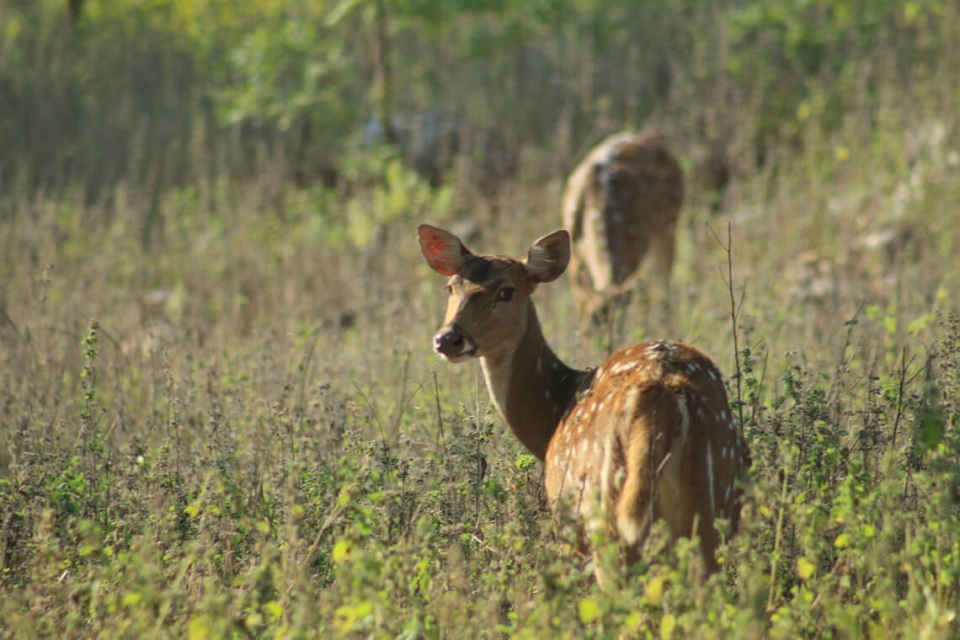
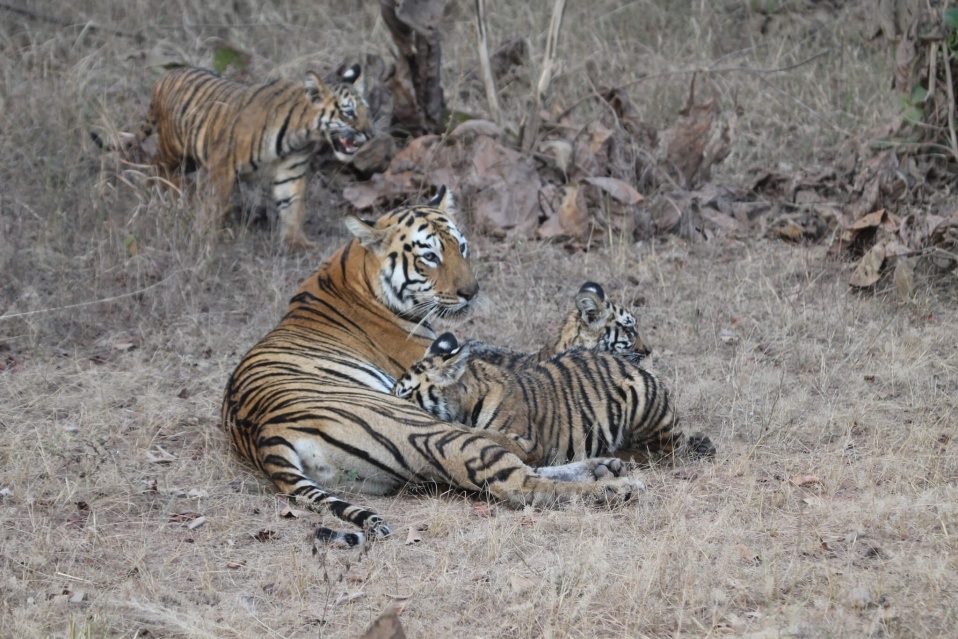
Arrival in Nagpur and transfer to Tadoba, where we will be staying for the next four nights.
Today, every serious tiger fan knows that Tadoba is the destination when it comes to maximizing the chances of a successful tiger sighting. Although the number of visitors means that the park can no longer be said to be the well-kept secret that it once was, a visit to Tadoba should still be at the top of a visitor’s list if it is important to observe the big cats with a high degree of safety. Tigers gather on Tadoba’s tracks like dust on tires. There are plenty of both in Tadoba. Very effective surveillance measures with hidden cameras to protect against poaching have led to the tiger population in Tadoba increasing dramatically within just a few years. The 624 km² reserve had 60 tigers in 2014, and there are now 80 – and the number is rising.
We go on a game drive here six times in total. Our game drives in Tadoba also take us to the park’s many buffer zones. The buffer zones are selected based on sightings three months before your arrival: game drives in the forests of Alizanza, Pangadi, Madnapur and Sirkada (approx. 45 minutes from the resort) are possible. We recommend booking a full-day safari on one day. You can be in the park from 6 a.m. to 6 p.m. without any time restrictions and can enjoy exclusive tiger encounters during the park’s usual closing time between 10 a.m. and 2 p.m. without sharing them with anyone. An absolute privilege given the rush of visitors that sometimes occurs!
4 nights in the Svasara Jungle Lodge.
Day 5 – Day 6: Tadoba – Pench National Park
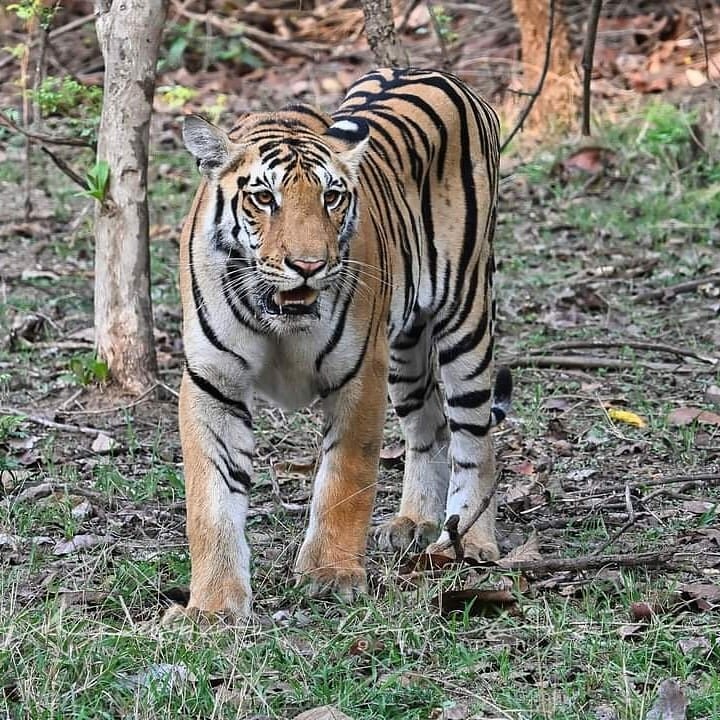

After the last game drive in Tadoba, we drive to Pench in about four hours.
Pench owes its name to the river that divides it into two territories. The area is hilly and has many small mountains and hills with criss-crossing streams that usually only flow during the monsoon or in winter. There are many south tropical deciduous forests here, especially teak forests. Wild dogs, wild boars, four-horned antelopes, crocodiles, turtles and many antelopes can be seen. We explore different zones of the park during three safaris.
Overnight stay at the Pench Tree House.
Day 6 – Day 9: Pench -Kanha National Park


After a final game drive in Pench, we drive on to the best possible national park in India: Kanha National Park. Kanha is considered a model for bringing nature conservation and tourism into harmony. The core area of the reserve is one of the first areas of “Project Tiger”, which Indira Gandhi founded in 1973. The project was founded as a decisive reaction to excessive tiger hunting and was committed to converting primeval forests into tiger reserves. To achieve this, farming villages had to be relocated and gamekeepers had to be hired. Since then, the heavily decimated tiger population in the national park has gradually recovered.
Kanha is the jewel of all wildlife reserves in India. The 2000 km² national park of deciduous forests and savannah grasslands stretches along the Satputra mountain range and preserves a great heritage: leopards, hyenas, blackbucks, axis deer, wild boars, hundreds of bird species and a population of around a hundred tigers are native here. The wide grasslands that stretch along the river valleys are the preferred habitats of red deer. Accordingly, the conditions for observing tigers are also well met. Although the chances of actually seeing a tiger in Kanha are worse than in Tadoba due to the size of the park, due to the abundance of species that Kanha has, a safari in India would not be complete without a visit to Kanha. For this reason alone, Kanha should be at the top of the priority list of any visitor to India.
Four safaris and 3 nights in the Flame of the Forest Lodge.
Day 9 – Day 11 : Kanha – Bandhavgarh National Park
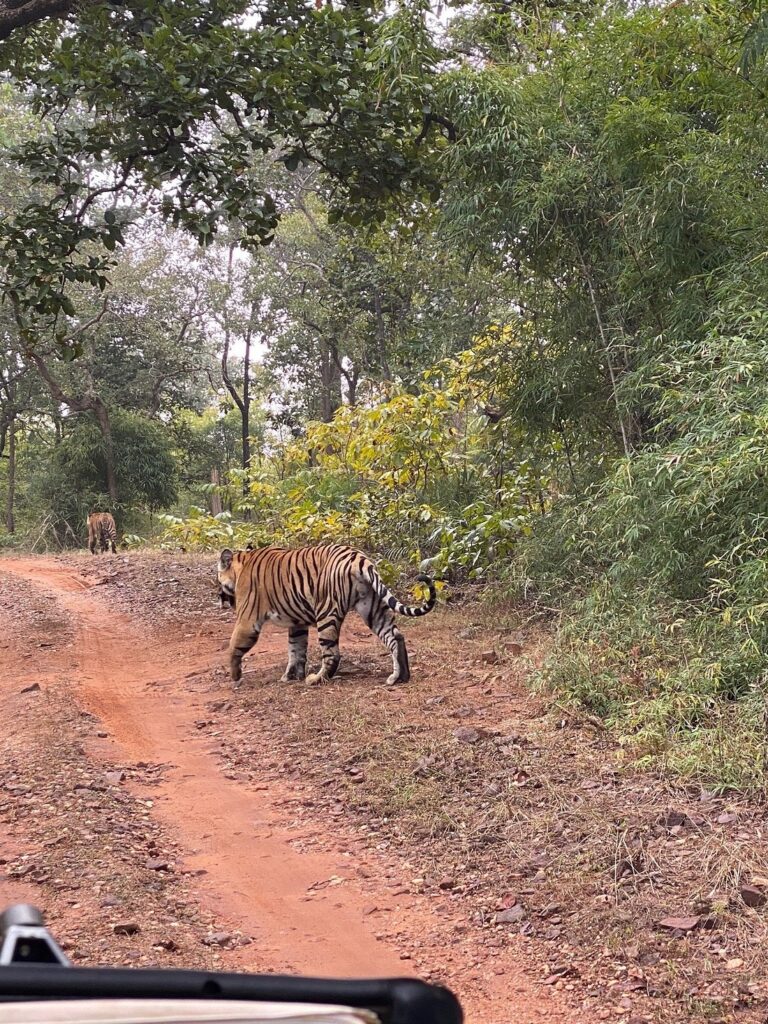
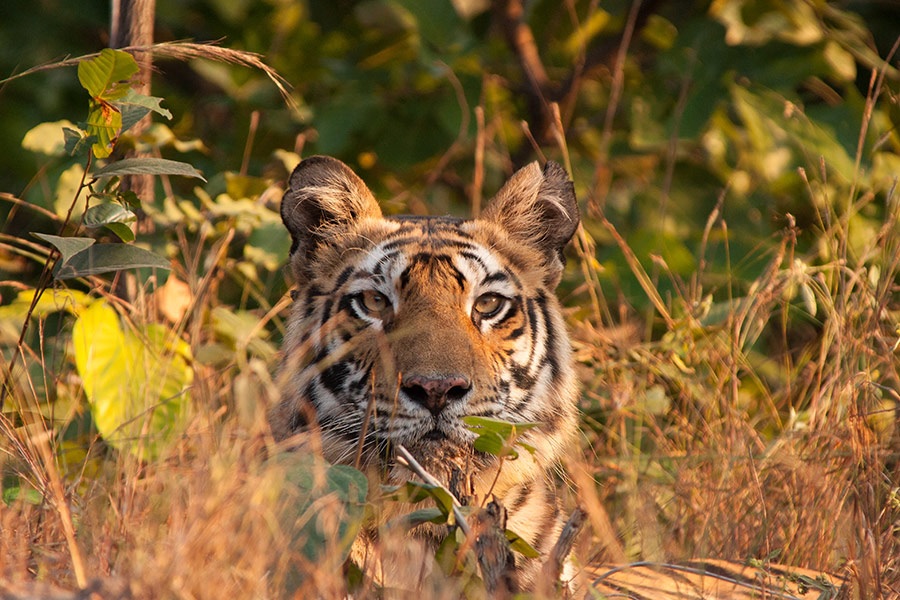
After a final game drive, we drive to Bandhavgarh National Park. A visit to India’s 437 km² national park is not only worthwhile because of its abundance of tigers. Jeep rides at dawn lead to fantastic ruins and are perfect for animal watching. When passing waterholes and rivers, the chances of encountering tigers in the wild are around 50%, and encounters with deer and monkeys are almost guaranteed. Deer species include gazelles, barking and axis deer and nilgai antelopes. You can also come across sloth bears and sambar deer, which live in seclusion in the forest. The mixed forest in the valleys offers an ideal habitat for a diverse range of birdlife. 150 species of birds have been counted here, including numerous exotic species such as bee-eaters, parakeets, flycatchers and even hornbills. The swampy grassland in the south of the park is dominated by an old fort on a high rocky plateau, which offers the best conditions for bird watching.
We make our way through the undergrowth in a jeep in search of tigers and red deer. The dilapidated ruins of the fort, which towers 300 m above the surrounding area, offer the best conditions for bird watching.
2 nights in the Kings Lodge.
Day 11 – Day 14: Bandhavgarh – Panna National Park


After the last safari, it takes about 5 hours to get to our lodge for today, just 2 km from the Panna Tiger Reserve: Sarai at Toria.
We go on a total of three safaris, which give us a good insight into the wild life of this 500 km² park. In 2009, the entire tiger population of Panna fell victim to poachers. Tigers from other tiger reserves in India had to be resettled here. And it worked: 12 pregnant tigresses gave birth to 16 cubs in one year. A total of 64 tigers currently live in the park (2022) (this number could rise to 78 by the end of the year). The tiger population in Panna is therefore considered to have fully recovered. If you are very lucky, you can even see one of the impressive big cats – the best chances are early in the morning when the animals come to the watering holes to quench their thirst. Even if the dramatic events of recent years have not made Panna a mecca for tiger watching, the green forest here has other treasures. Four-horned antelopes, red dogs, nilgai antelopes and sloth bears are seen here much more often than elsewhere. The Ken River also meanders picturesquely past the park, and you can watch crocodiles on a boat trip. In the evening you can take an optional visit to the Khajuraho temples for the touristy but still highly recommended light and sound show.
3 nights in Sarai at Toria.
Day 14 – Day 15: Panna – Khajuraho – Flight to Delhi

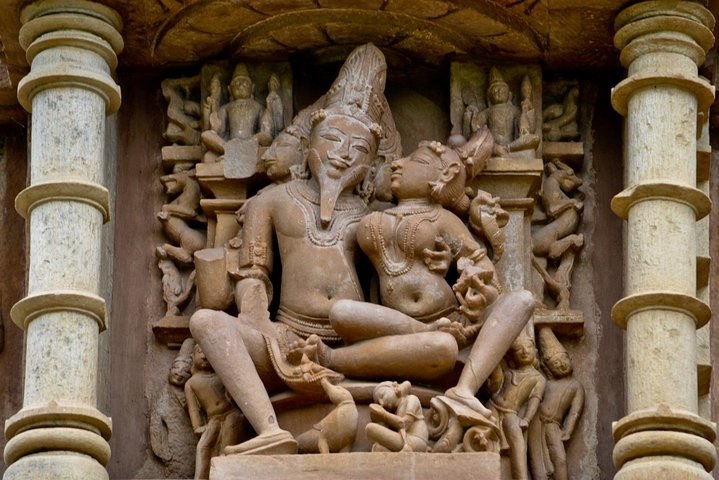
After breakfast drive to Khajuraho & Board flight to Delhi. On arrival meet to our representative and transfer to hotel near by Airport. After a farewell dinner drop you at New Delhi International Airport board onward flight